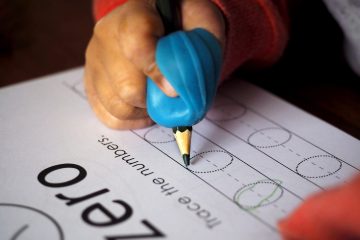 If you’ve been following the blog lately, you know that we’ve been talking about how important it is to know your child’s learning style so that you can help them learn best at home and advocate for them at school as well. We’ve also discussed some specific strategies for those kids who, in my opinion, are the most underserved in school: kinesthetic learners.
If you’ve been following the blog lately, you know that we’ve been talking about how important it is to know your child’s learning style so that you can help them learn best at home and advocate for them at school as well. We’ve also discussed some specific strategies for those kids who, in my opinion, are the most underserved in school: kinesthetic learners.
What if you have a visual learner, though? What can you do to help her reach her full potential by using her natural talents? Well, first, it’s important to know that visual learners learn by seeing, and they often think in pictures. Because so much of reading instruction depends on listening, visual learners may have difficulty acquiring early literacy with traditional teaching methods. The good news is that according to Education.com, once they learn to read, visual learners often become avid readers. Plus, today’s educators are usually well-versed on the different ways their students learn, and they intentionally differentiate their instruction to accommodate the differences in learning styles amongst their students.
Even so, knowing what to do to help your visual learner at home can help him reduce frustration and progress more quickly than he would otherwise. Here are a few tips:
Give Examples
Visual learners sometimes have trouble following verbal instructions. Therefore, instead of telling your child how to write a letter, show her instead. Furthermore, if she has to circle certain letters for homework, don’t just read her the instructions, but do the first one for her as an example. I promise her teacher won’t mind!
Provide Visual Cues
As I mentioned, visual learners like to think in pictures. Can you conjure up a mental image of what a sound looks like though? It’s difficult, right? Help your little one associate sounds with pictures by creating or providing flash cards that associate sounds with objects or animals that start with the sound. For instance, for the sound /p/, draw a picture of a pig on the back of the card. For the sound /ch/, sketch a wedge of cheese. Use the cards routinely for phonics practice.
Emphasize Word Families
Word families that end with the same letters like “cat, hat, bat, rat,” etc. are fundamentals of reading instruction, and the good news is that they provide a great way for visual learners to “see” the relationships between sounds, letters, and words. Visual learners love patterns, and word families are similar to simple patterns. Use letter magnets on a cookie sheet to provide a colorful example of word families, and let your child experiment with changing the first letter to create new words.
Instructional games and software are also great tools for visual learners as well. Just remember, if they can see it, they can achieve it!
Not sure if your child is a visual learner? Take this online learning styles quiz to find out!


